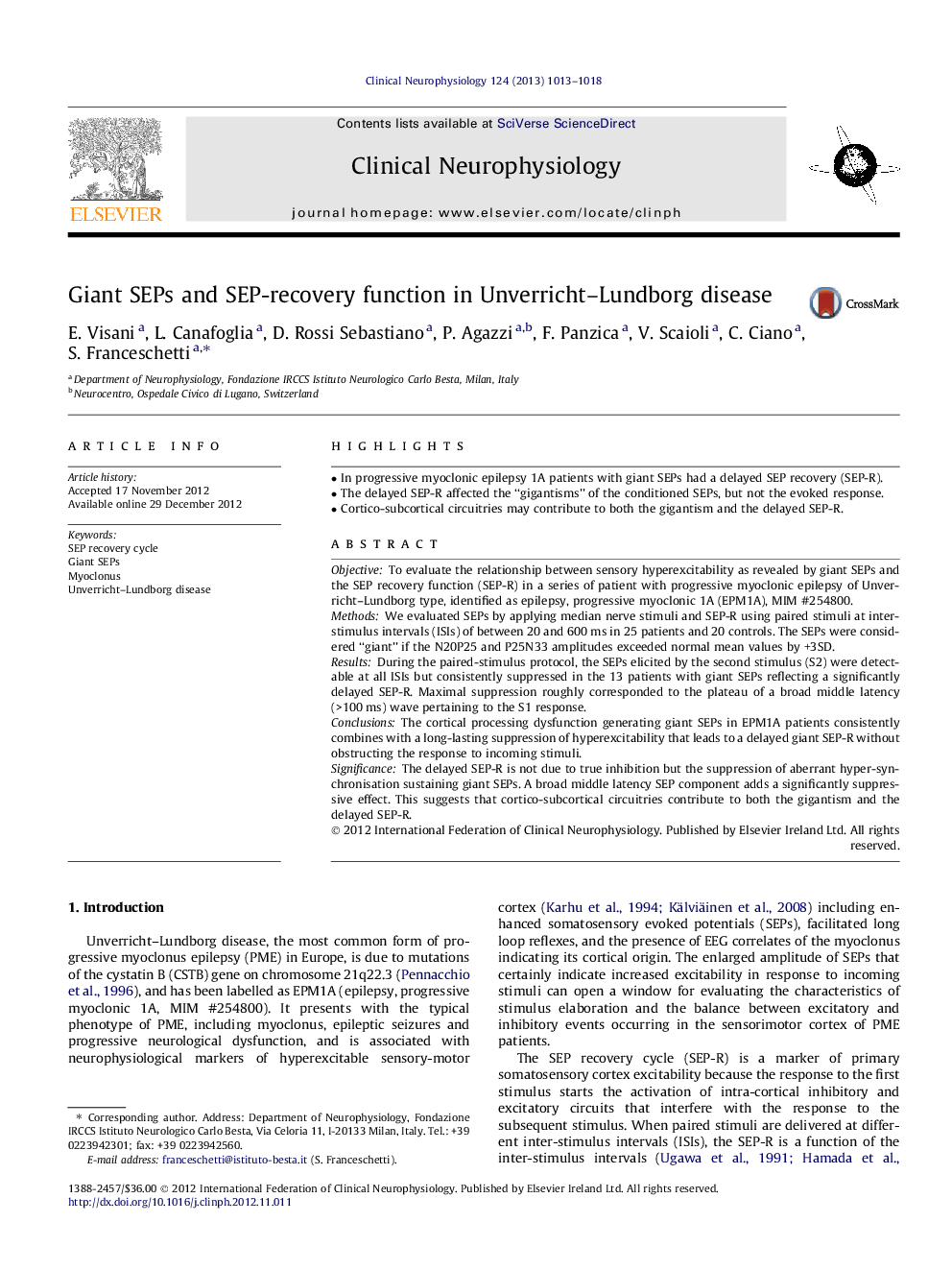| Article ID | Journal | Published Year | Pages | File Type |
|---|---|---|---|---|
| 3044340 | Clinical Neurophysiology | 2013 | 6 Pages |
ObjectiveTo evaluate the relationship between sensory hyperexcitability as revealed by giant SEPs and the SEP recovery function (SEP-R) in a series of patient with progressive myoclonic epilepsy of Unverricht–Lundborg type, identified as epilepsy, progressive myoclonic 1A (EPM1A), MIM #254800.MethodsWe evaluated SEPs by applying median nerve stimuli and SEP-R using paired stimuli at inter-stimulus intervals (ISIs) of between 20 and 600 ms in 25 patients and 20 controls. The SEPs were considered “giant” if the N20P25 and P25N33 amplitudes exceeded normal mean values by +3SD.ResultsDuring the paired-stimulus protocol, the SEPs elicited by the second stimulus (S2) were detectable at all ISIs but consistently suppressed in the 13 patients with giant SEPs reflecting a significantly delayed SEP-R. Maximal suppression roughly corresponded to the plateau of a broad middle latency (>100 ms) wave pertaining to the S1 response.ConclusionsThe cortical processing dysfunction generating giant SEPs in EPM1A patients consistently combines with a long-lasting suppression of hyperexcitability that leads to a delayed giant SEP-R without obstructing the response to incoming stimuli.SignificanceThe delayed SEP-R is not due to true inhibition but the suppression of aberrant hyper-synchronisation sustaining giant SEPs. A broad middle latency SEP component adds a significantly suppressive effect. This suggests that cortico-subcortical circuitries contribute to both the gigantism and the delayed SEP-R.
► In progressive myoclonic epilepsy 1A patients with giant SEPs had a delayed SEP recovery (SEP-R). ► The delayed SEP-R affected the “gigantisms” of the conditioned SEPs, but not the evoked response. ► Cortico-subcortical circuitries may contribute to both the gigantism and the delayed SEP-R.
